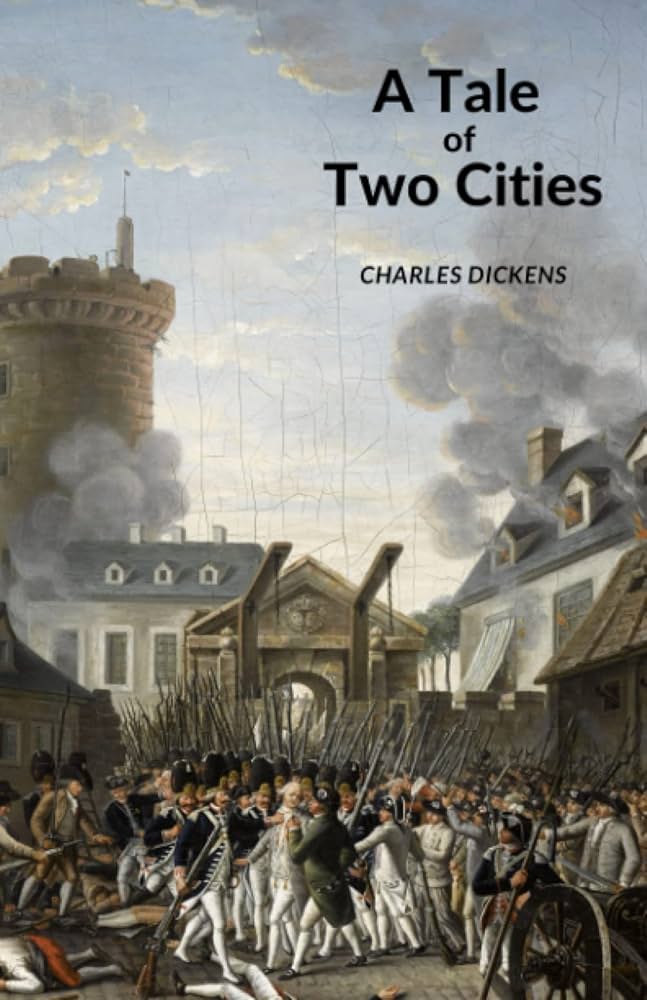Charles Dickens’ “The Tale of Two Cities” is a seminal work of historical fiction that captures the essence of the French Revolution, exploring themes of sacrifice, redemption, and the indomitable human spirit. First published in 1859, the novel remains a powerful commentary on the social and political upheavals of the time, set against the backdrop of two cities: London and Paris. Through its intricate plot and richly drawn characters, Dickens weaves a tale that resonates with readers across generations, offering insights into the nature of love, justice, and the quest for a better world.
The Setting and the Storm:
The novel opens with one of the most famous openings in English literature: “It was the best of times, it was the worst of times…” This paradox sets the tone for a story that unfolds during a period of immense turmoil and change. Paris, the epicenter of the French Revolution, is a city of contrasts, where the opulence of the aristocracy stands in stark contrast to the abject poverty of the masses. London, on the other hand, serves as a haven for French émigrés and a place where the seeds of revolution are viewed with a mix of fascination and horror.
The Characters:
At the heart of the novel are three central characters: Charles Darnay, a French aristocrat who renounces his family’s wealth and title; Sydney Carton, a disillusioned English lawyer with a penchant for self-destruction; and Lucie Manette, a young woman whose life is marked by tragedy, resilience, and love. Their intertwined fates are a testament to the complexities of human nature and the transformative power of compassion and sacrifice.
Themes and Motifs:
“The Tale of Two Cities” is rich with themes that continue to resonate today. The novel explores the idea of resurrection, not only in a literal sense but also as a metaphor for personal and societal renewal. It delves into the concept of revolution and the fine line between justice and vengeance, questioning the cost of freedom and the nature of true redemption.
The Role of Sacrifice:
Perhaps the most poignant theme in the novel is the role of sacrifice. Dickens examines how individuals are willing to give up their own happiness, and even their lives, for the sake of others. This theme culminates in a climactic act of selflessness that underscores the novel’s message about the power of love to transcend the darkest of times.
Legacy and Impact:
“The Tale of Two Cities” has left an indelible mark on literature and popular culture. Its exploration of the human condition and the moral dilemmas faced by its characters continue to provoke thought and discussion. The novel’s enduring popularity is a testament to Dickens’ skill as a storyteller and his ability to create a narrative that is both deeply moving and thought-provoking.
Conclusion:
“The Tale of Two Cities” is more than just a historical novel; it is a timeless exploration of the human spirit’s capacity for change and redemption. Through its vivid portrayal of a tumultuous era, Dickens invites readers to reflect on the forces that shape our lives and the choices that define our character. As we continue to navigate our own best and worst of times, the lessons of “The Tale of Two Cities” remain as relevant as ever, reminding us of the enduring power of love, sacrifice, and the quest for a more just and compassionate world.
